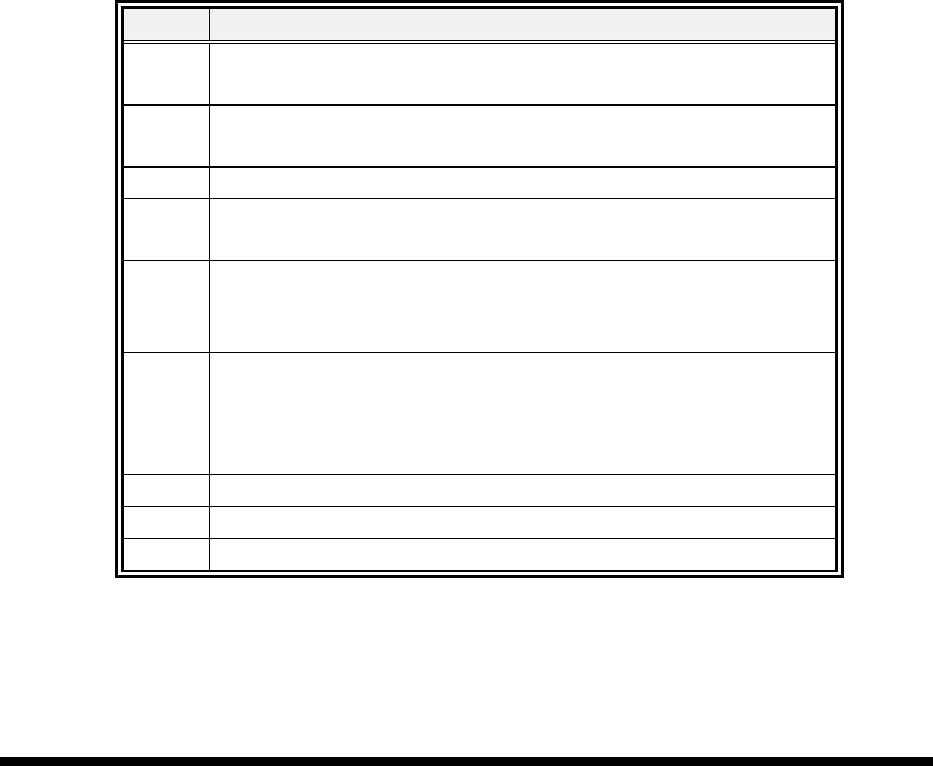
User’s Manual
96 ECB-865 User’s Manual
APPENDIX D: AMIBIOS POST Check Point List
AMIBIOS provides all IBM standard Power On Self Test (POST) routines as well as
enhanced AMIBIOS POST routines. The POST routines support CPU internal diagnostics.
The POST checkpoint codes are accessible via the Manufacturing Test Port (I/O port 80h).
Whenever a recoverable error occurs during the POST, the system BIOS will display an
error message describing the message and explaining the problem in detail so that the
problem can be corrected.
During the POST, the BIOS signals a checkpoint by issuing one code to I/O address 80H.
This code can be used to establish how far the BIOS has executed through the power-on
sequence and what test is currently being performed. This is done to help troubleshoot
faulty system board.
If the BIOS detects a terminal error condition, it will halt the POST process and attempt to
display the checkpoint code written to port 80H. If the system hangs before the BIOS
detects the terminal error, the value at port 80H will be the last test performed. In this case,
the terminal error cannot be displayed on the screen. The following POST checkpoint
codes are valid for all AMIBIOS products with a core BIOS date of 07/15/95 version 6.27
(Enhanced).
Uncompressed Initialization Codes — The uncompressed initialization checkpoint hex
codes are listed in order of execution:
Code Description
D0 NMI is disabled. CPU ID saved. INIT code checksum verification will
be started.
D1 Initializing the DMA controller, performing the keyboard controller BAT
test, starting memory refresh, and going to 4GB flat mode.
D3 To start memory sizing.
D4 Returning to real mode. Executing any OEM patches and setting the
stack next.
D5 Passing control to the uncompressed code in shadow RAM at
E000:0000h. The INIT code is copied to segment 0 and control will be
transferred to segment 0.
D6 Control is in segment 0. Next, checking if <Ctrl><Home> was pressed
and verifying the system BIOS checksum. If either <Ctrl><Home> was
pressed or the system BIOS checksum is bad, next will go to
checkpoint code E0h. Otherwise, going to checkpoint code D7h.
D7 To pass control to interface module.
D8 Main BIOS runtime code is to be decompressed.
D9 Passing control to the main system BIOS in shadow RAM next.


















